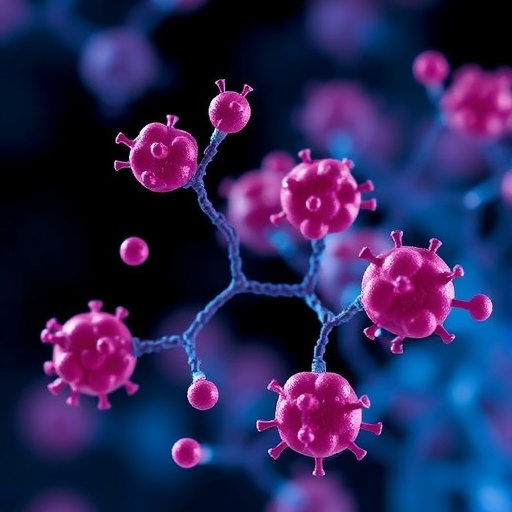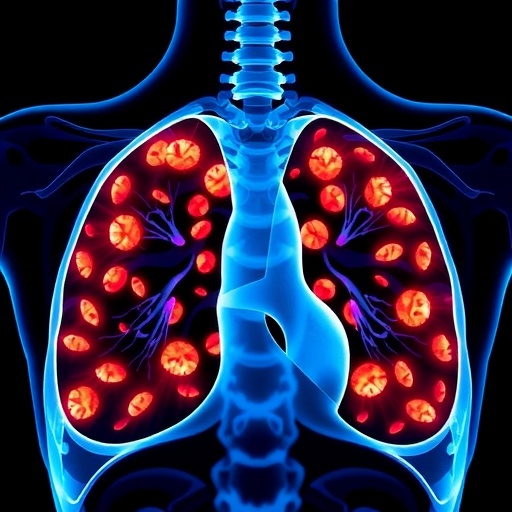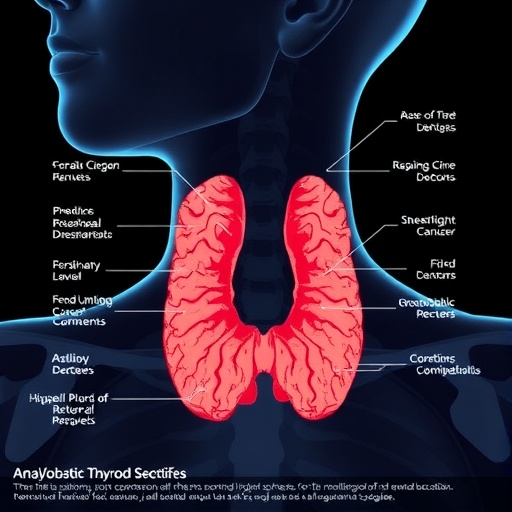In the relentless quest for novel cancer therapies, a potent class of compounds known as stilbenes has recently captured the spotlight. Emerging research has unveiled their multifaceted roles in combating tumor progression, offering promising avenues beyond conventional chemotherapeutic strategies. Stilbenes, naturally occurring polyphenolic compounds predominantly found in plants such as grapes and berries, exhibit impressive anticancer properties that extend through various molecular mechanisms. This breakthrough is setting the stage for a paradigm shift in oncology, merging natural product pharmacology and molecular medicine in unprecedented ways.
Cancer, being one of the most complex and heterogenous diseases, often evades standard treatments through multiple resistance mechanisms. This challenge has intensified the need for therapeutic agents that can target cancer at different biochemical nodes simultaneously. Stilbenes have proven to be uniquely positioned in this regard due to their ability to modulate a wide spectrum of signaling pathways critical to cell proliferation, apoptosis, metastasis, and angiogenesis. Their pleiotropic effects are attributed to their capacity to interact with key molecular targets, thereby disrupting tumor-promoting networks.
One such stilbene, resveratrol, has been the subject of extensive investigations. Resveratrol has demonstrated anti-proliferative activity by influencing cell cycle regulators and inducing programmed cell death in various cancer cell lines. Mechanistically, it modulates the activity of tumor suppressor proteins like p53, and interferes with the NF-κB signaling cascade, a pathway notorious for fostering inflammatory microenvironments conducive to tumor growth. These biochemical interactions facilitate the suppression of tumorigenesis, highlighting stilbenes as promising agents with multitargeted therapeutic potential.
Beyond resveratrol, synthetic analogs and derivatives of stilbenes are being engineered to enhance bioavailability, stability, and target specificity. The inherent limitation of natural stilbenes, chiefly their rapid metabolism and poor water solubility, has hampered translational progress. However, recent advances in medicinal chemistry have yielded modified stilbene molecules with superior pharmacokinetic profiles, enabling higher efficacy in preclinical cancer models. These findings herald the potential to overcome past obstacles limiting clinical application.
Intriguingly, stilbenes’ anticancer effects are not restricted to direct tumor cell targeting but also extend to remodeling the tumor microenvironment. The tumor stroma, consisting of fibroblasts, immune cells, and extracellular matrix components, plays a pivotal role in sustaining malignant phenotypes. Stilbenes have been shown to inhibit angiogenesis by downregulating vascular endothelial growth factor (VEGF) signaling, effectively starving tumors of their blood supply. Furthermore, these compounds can modulate immune responses, promoting antitumor immunity through the activation of cytotoxic T cells and suppression of immunosuppressive regulatory T cells.
Recent molecular investigations have revealed that stilbenes might directly engage critical epigenetic regulators within cancer cells. Epigenetic alterations, including DNA methylation and histone modification, are key drivers of oncogene activation and tumor suppressor silencing. Stilbene compounds have displayed an ability to reverse aberrant epigenetic landscapes by inhibiting DNA methyltransferases and histone deacetylases. This molecular reprogramming restores normal gene expression patterns, reinstating cell cycle checkpoints and apoptotic pathways which are often dysregulated in cancer.
The clinical relevance of these preclinical discoveries has spurred a wave of translational studies. Several clinical trials evaluating stilbenes, particularly resveratrol formulations, are underway to determine safety, optimal dosing, and therapeutic efficacy in various solid tumors and hematological malignancies. Preliminary results have shown acceptable toxicity profiles and hints of clinical activity, fostering hope for their integration into standard cancer treatment regimens. Moreover, their synergistic potential when combined with existing chemotherapies and radiotherapy is under intense scrutiny.
However, the road to clinical adoption is fraught with challenges, notably due to stilbenes’ complex pharmacodynamics and pharmacokinetics. Their often inconsistent bioavailability and rapid degradation limit systemic exposure and therapeutic impact. Innovative delivery systems such as nanoparticle encapsulation, liposomal carriers, and conjugation with targeting moieties are being developed to optimize tumoral accumulation. These advanced drug delivery technologies aim to maximize anticancer potency while minimizing off-target effects and toxicity.
Another remarkable aspect of stilbenes is their ability to combat cancer stem cells (CSCs), a subpopulation responsible for tumor relapse and metastasis. CSCs possess resilience against conventional therapies and can regenerate heterogeneous tumor cell populations. Stilbenes mediate the suppression of CSC-associated signaling pathways like Wnt/β-catenin, Notch, and Hedgehog, thereby impeding the self-renewal capacity and survival of these elusive cells. Targeting CSCs represents a critical step toward durable cancer remission.
Furthermore, mounting evidence suggests that stilbenes can modulate oxidative stress within tumor cells. By acting as powerful antioxidants, they mitigate reactive oxygen species (ROS)-mediated DNA damage. Paradoxically, under certain conditions, stilbenes can also induce ROS generation, triggering apoptotic cascades selectively in cancerous cells. This dual redox modulating activity enables a finely tuned therapeutic window which can be exploited to maximize anticancer efficacy.
The cross-talk between stilbenes and metabolic pathways in cancer cells is another frontier attracting scientific interest. Cancer metabolism is characterized by altered nutrient utilization and energy production, commonly referred to as the Warburg effect. Stilbenes have been documented to interfere with key metabolic enzymes and pathways such as glycolysis and mitochondrial oxidative phosphorylation. This metabolic reprogramming undermines cancer cell energy homeostasis, impairing growth and survival.
Looking forward, integrative approaches combining stilbene-based therapy with genomic and proteomic profiling hold promise for personalized medicine. Biomarker-driven patient stratification could identify individuals most likely to benefit from stilbene treatment, enhancing clinical outcomes and minimizing unnecessary exposure. Additionally, combinatorial strategies with immunotherapies and targeted agents may further expand therapeutic horizons, establishing stilbenes as indispensable components of multi-modal cancer management.
In summary, stilbenes encompass a fascinating and versatile class of compounds with profound implications for cancer therapy. Their multifarious mechanisms—ranging from modulation of signal transduction pathways, epigenetic regulation, tumor microenvironment alteration, to metabolic interference—position them at the vanguard of next-generation anticancer agents. Continued rigorous research and clinical validation are essential to fully harness their potential and transform cancer treatment paradigms globally.
The convergence of natural product research with cutting-edge molecular oncology exemplified by stilbenes heralds a new era in cancer therapeutics. As investigations progress and more refined stilbene derivatives emerge, the dream of safe, effective, and multi-targeted cancer treatments becomes increasingly tangible. This scientific advance not only revitalizes hope for patients worldwide but also underlines the enduring importance of nature-derived compounds in combating one of humanity’s most formidable diseases.
Subject of Research: Stilbenes and their molecular mechanisms in cancer therapy and clinical application.
Article Title: Stilbenes in cancer therapy: insights into molecular targets, and advances towards clinical application.
Article References:
Islam, F., Zehravi, M., Raju Molla, M. et al. Stilbenes in cancer therapy: insights into molecular targets, and advances towards clinical application. Med Oncol 42, 487 (2025). https://doi.org/10.1007/s12032-025-03051-2
Image Credits: AI Generated
Tags: angiogenesis inhibition by stilbenesapoptosis and cancer treatmentcancer cell cycle regulationchemoresistance and novel therapiesmolecular targets in cancer treatmentnatural compounds in oncologynatural product pharmacology in oncologypolyphenolic compounds and cancerresveratrol anticancer propertiessignaling pathways and cancer therapystilbenes in cancer therapytumor progression and stilbenes





